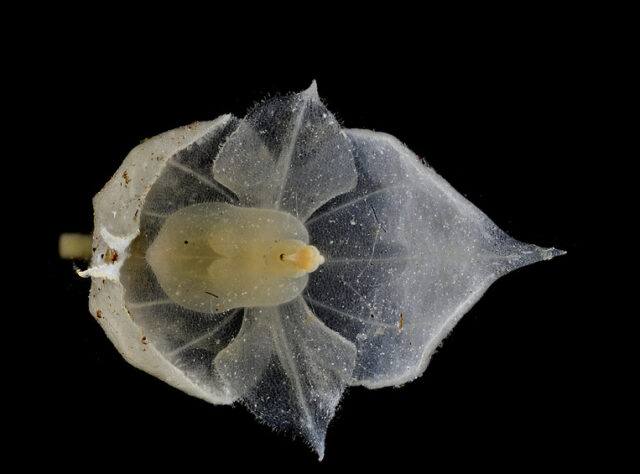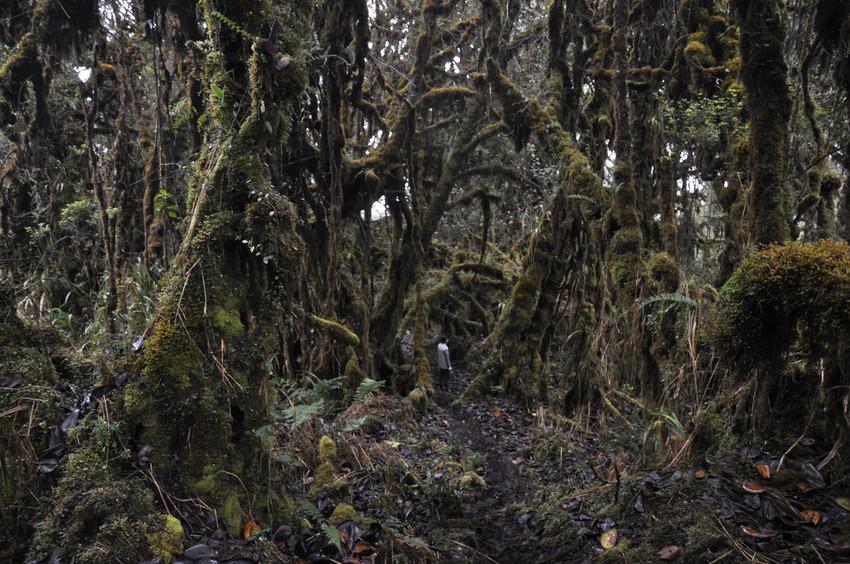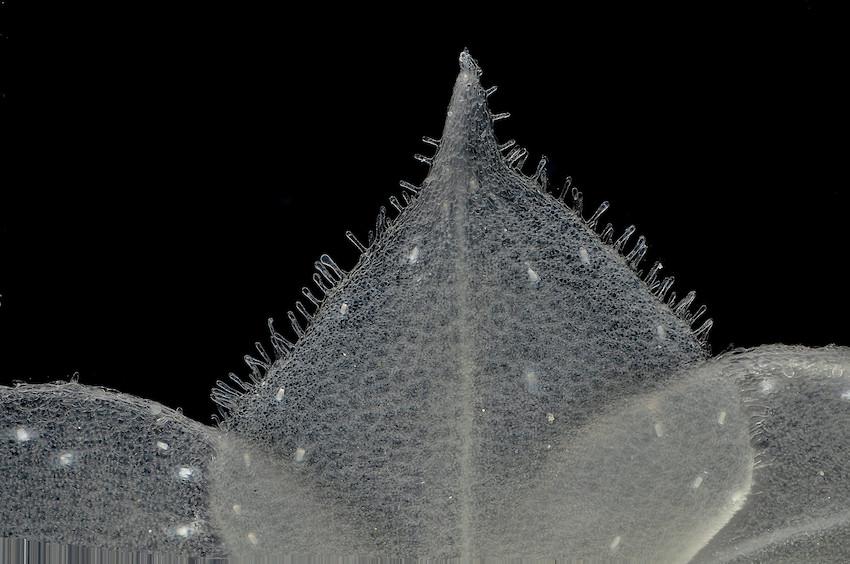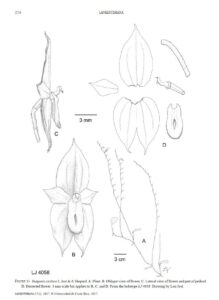
World Land Trust (WLT) has been working in partnership with Fundacion EcoMinga since 2007 to purchase and protect threatened cloud forest and paramo grasslands in the transition zone between the Andes and the Amazon Basin in central Ecuador.
EcoMinga’s focus area is a rich centre for plant endemism with one of the most spectacular plant radiations in South America. New species discoveries within this area include the smallest orchid in the world from the Platystele genus, and a new species of tree (Blakea attenboroughii) named in honour of our patron, Sir David Attenborough. Through the extensive work of botanist Lou Jost,co-founder of Fundacion EcoMinga, and his students, some 50 new species have been discovered on the mountains of the eastern Andes, making these mountains a global conservation priority.

Blakea attenboroughii, Attenborough’s Tree. Credit: Anna Williams
Lou Jost writes from Ecuador, explaining just what it means to name a species new to science.
In Ecuador, we are locked down from 2pm to 5am. No one is supposed to leave their house during those hours. From 5am to 2pm we can go out, but only for necessities, and most businesses are closed. People can only drive one day a week. No driving at all on weekends. This is an economic disaster for all of us. No visitors, no meetings, no trips to our reserves. But there is a silver lining. Lots of time to concentrate.
It is my opportunity to write up the scientific descriptions of some of the orchid species I have discovered over the years. Life has repeatedly interrupted these descriptions, but now is my chance. It’s an involved process. I’ve already done the hardest part, though, hiking up unexplored mountains for days at a time, searching the moss-covered forests for never-before-seen orchids. The tricky part isn’t the hiking (though that is hard enough) but building up enough experience to recognize something unusual. When I find a candidate, I collect a leaf and flowers, or the whole plant if there are multiple individuals.
The flowers go straight into a vial of alcohol, which preserves them forever as white ghosts of their former selves. I have eight thousand such orchid-filled vials covering large areas of the floor in my house, all numbered and catalogued. This is my raw material for the scientific descriptions.

Cerro Candelaria Reserve,Ecuador. Credit: Lou Jost/Ecominga
Is it a new species?
The next step is to check whether a candidate orchid really is a new species. I examine the print and online literature, and write to appropriate specialists. When I am sure that I have something new to science, the formal description process begins. I must illustrate every detail of the flower, and this usually means examining, dissecting, and photographing the submerged white alcohol-preserved flower. This is easier said than done. Many of the species I work with are shockingly small and require the use of microscopes for visual examinations. I use tiny scalpels and scissors designed for eye surgery to make the dissections.

Lou Jost working from his home in Banos, Ecuador, creating detailed microphotos of orchid specimens.
Photography of the tiny details is even harder and requires special techniques and equipment. It has taken me years to perfect these techniques and, in some cases, to invent new methods. Only in the last few months have I developed the technology and bought the equipment (patched together from used parts that appear on eBay) to reach the level of quality that these orchids deserve.
Each picture is only sharp in a very thin slice of the orchid, because the depth of field is only a few microns at these high magnifications, less than the width of a human hair. Special software then combines the sharp parts of each of the hundreds of photos, to make a single photo that is sharp from front to back. (The absence of traffic vibrations thanks to our lockdown is a tremendous help in this process; the smallest vibration ruins a microphoto.) These photos have been revealing a rich and unexpected diversity of microscopic surface textures on the flowers. Traditionally these textures have not been described in much detail, but these hairs and knobs and clubs must be important in interactions with the insect pollinators, and I am going to include information about these structures in my new descriptions.

“I’ve finally gotten to the point where I am almost satisfied with my photographs of the micro-textures of the new orchids. This photo (above) has more dramatic lighting than is normal for scientific microphotos, but I like the effect. They look like mysterious translucent deep-sea creatures floating through the blackness of the deep ocean (they are in fact floating in alcohol against a backdrop of a special black light-absorbing velvet-like material. A computer controls both the camera and a motor that turns a microscope focusing dial. Hundreds of pictures are taken in succession, with the computer moving the microscope focus a few microns between each picture.” – Lou Jost.
Some of my microphotos will be published directly in the description, while others are used to guide my botanical drawing of the new species. These drawings are traditionally included in the publication of every new species. I used to do them in black carbon ink using an old-fashioned pen with nib, but now I draw digitally on a large touch-sensitive computer display. I am guided by the photos but also have the real specimen at my side under a stereo microscope, to resolve ambiguities in the photo.

“For the publication, a complete set of measurements of every flower and plant part is needed. For the smaller parts I make measurements electronically from a calibrated photograph. I must also convey the variability of the species, so I examine multiple individuals if I have found more than one. These drawings were for the scientific description of Teagueia anitana.” – Lou Jost.
The time-honoured code used for naming of new species
I then have to name the new species, using the Latin binomial system developed by Linnaeus nearly three hundred years ago. The first word is the genus or “surname” for the plant, and this is almost always already determined (though I did get to co-describe one new genus, Quechua). The second word is the species or “given” name, which distinguishes it from its relatives, There is a time-honoured code of nomenclature governing these names, with some rules dating from Linnaeus himself. A name, once given, is forever; even Linnaeus’ names are still in use. I often name things after the location where it was found, or some feature of the plant. Lately I have been naming some of them to honour people who have supported conservation of their habitat, or to honour loved ones of those supporters, in conjunction with the World Land Trust and other conservation organisations.
The preserved specimen which serves as the basis of the description must be deposited in an official herbarium (plant museum). There it will be available to anyone who wants to study it. Some herbaria are now digitized so that anyone in the world can examine the specimens. (Unfortunately that does not work for my orchid flowers, which are kept in alcohol at the herbaria.)
In addition it is now common to sequence the DNA of a new species to see how it fits into the orchid family tree. I can’t do that at home but my scientist friends often do it for me.
The last step
The last step of the description is the final test, submission of the description article for publication in a peer-reviewed scientific journal. The article will be examined and criticized minutely by several experts to check if the arguments in the paper are valid. If they agree that I have adequately supported my claim that the species is new to science, the paper is revised to correct any deficiencies found by the reviewers, and then it is accepted and published. On the day of publication the name becomes the official permanent global scientific name for that species. Yippee!
Note from WLT: would you like to name a species new to science?
Carl Linnaeus (1707-1778), a Swedish botanist, invented the modern system of binomial nomenclature; naming his favourite plants after his favourite people – and some weeds after people he didn’t like!
Later, major donors such as Lord Rothschild had numerous species named after him for financing collecting. The Rothschild giraffe (Giraffa camelopardis rothschildi), was the first to carry his name and another 153 insects, 58 birds, 17 mammals, three fish, three spiders, two reptiles, one millipede and one worm were later named for him.
The modern-day equivalent is donors supporting conservation, having species named after them. If you would like to name a species as a permanent memorial for a colleague, loved one or simply for yourself, Lou Jost still has species waiting to be named.
Please email Dan Bradbury at WLT for information on how you can name a species new to science.
